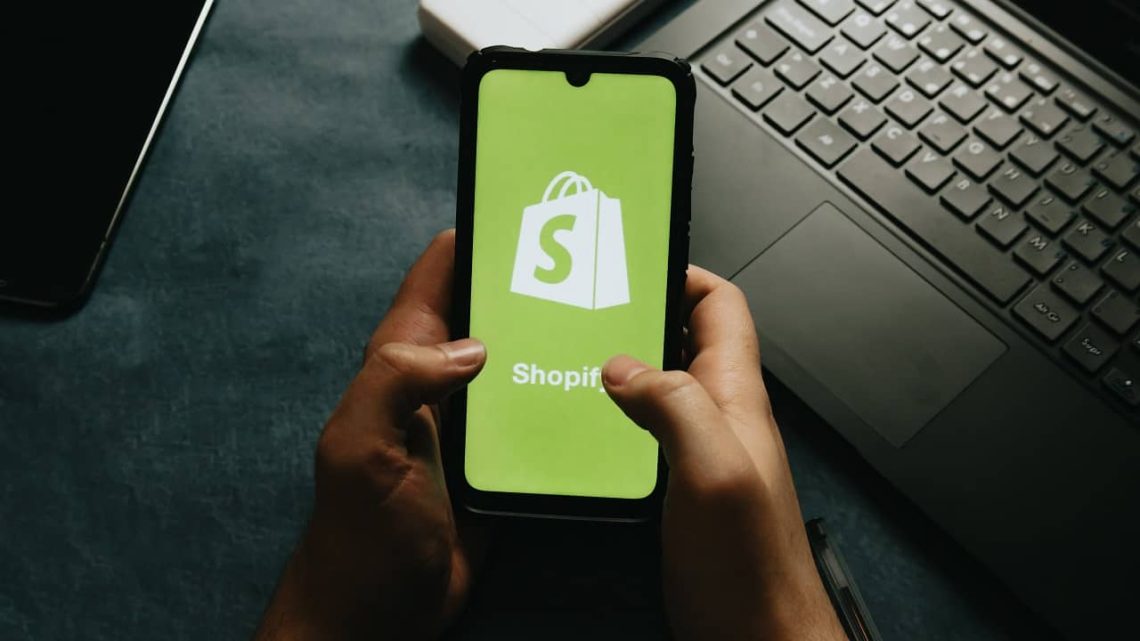If you are here, then you are either finally working on your dream to run your e-commerce store, or you want to expand your portfolio by adding another Shopify account. Buying an existing Shopify store is now more common than ever. Entrepreneurs like it because they don’t have to start from zero, they get an already running business in hand.
E-commerce is booming every year, and if you want to get on this bandwagon, buying a Shopify store is the shortcut. But there are so many complicated things involved in this process, so I thought let’s write a guide specifically on how to buy a Shopify store.
Why Buying an Existing Shopify Store is a Good Idea?
Starting a Shopify store is easy, so why buy someone’s business? Well, the Shopify store is not just about creating an account on the platform. You have to then find a good product, make agreements with the manufacturer/supplier, create a marketing plan, hire people, and then sell it. It takes weeks to months to get to your first sale.
But let’s say you are good at marketing, and you know how to get new customers for a business. In this case, wouldn’t it be easier to just buy an already-running business? You get products, suppliers, marketing plans, and employees included in the deal. You can now just focus on finding new ways to sell the product with your marketing expertise.
Side note: A lot of marketers do this when they buy a store, improve it, and then sell it to another entrepreneur. It is called website flipping.
Buying a Shopify store is a smart way to jump into e-commerce with a ready-made business that’s already bringing in cash. You get all the profit the business is generating from day one, to expand it further.
You’ll skip the headaches of building a store from the ground up. Most businesses fail in the early stages because of the wrong product-market fit. This usually results in a financial loss for the entrepreneur as well as brings demotivation. But if the product is already selling, your job is just to sell more.
And since you are buying an online business, you can just start the work from the comfort of your home.
Another major advantage is that you’ll have an established customer base. Transactions are happening and you have the data about who is buying and from where. So, you have much more information to analyze the business for its future marketing.
Buying an existing store also helps you avoid procrastination. Just think about designing the website: you have to create a logo, find a color scheme, hire a developer, etc. This is just the first step and you can see there are so many decisions involved. We haven’t talked about inventory and marketing operations. This all takes a lot of time and might drain your energy.
That’s why buying a Shopify store is so much better.
However, we must tell you one major downside. In most cases, you are buying a solid business from an owner who’s simply retiring or wants to move on to something else, but there are chances you might find many issues with the store later. So you need to do proper website due diligence before the purchase.
Is it profitable to buy a Shopify store?
Yes! In most cases, the seller is listing a business that is already generating profits. From our experience, most people who want to sell their business are already turning profits, otherwise, they would have shut down the operations anyway. They know they will get a buyer only when there is Profit on the P&L statement.
To maximize profitability, we advise you to focus on businesses with high-profit margin products and stay abreast of consumer trends. It is also important to buy the store at the right valuation. There are many factors involved in this calculation. You have to consider revenue, profit, market conditions, earning trends, business age, competition, pricing power, etc.
This will take a lot of time, so we made a Shopify Valuation Calculator to find the approximate worth of an existing store.
Can I transfer my Shopify store to a new owner?
Yes, you can transfer a Shopify store to a new owner. The process involves transferring ownership in the Shopify Dashboard. From your Dashboard, go to Stores > click Settings > Users and permissions. In the Store Owner section, click Transfer ownership. Fill in the new store owner’s information and select Transfer store ownership.
Is it legal to sell the Shopify store?
Yes, it is completely legal to sell a Shopify store. Shopify has no problem with it except in some rare cases.
But when selling or buying a store, you need to ensure the business is legitimate and compliant with relevant laws and regulations. This includes having the necessary licenses and permits.
Also, when you sell globally, you need to comply with both the laws of your store’s location and the laws of the places where you ship.
Get the best price for your business — we take care of the rest.
Start Selling for Free6 Steps To Buy A Shopify Store
To simplify the following, here is a simple 6-step checklist you can follow to start the process of buying an existing Shopify Store:
- Setting Your Budget and Niche: The first thing to do is to decide your budget. Then, consider the type of E-commerce business you want to acquire: which niche (clothing, electronics, etc.) what audience base, dropshipping or not.
- Where to Find the Right Shopify Store: It’s difficult to find businesses on sale on your own, so it’s better to try online marketplaces like Ecomswap to explore various options.
- Evaluating Shopify Stores: We will talk about it after when you want to shortlist from so many stores, but some key areas to focus on are revenue, inventory, and assets.
- Due Diligence: Now you have a Shopify store in mind, do the proper due diligence: Verify the financial statements, business licenses, regulatory documents, and tax returns. Also if possible, try to do a meeting with the seller and ask these important questions.
- Negotiations: Identify key terms for the purchase agreement. Negotiate the price based not just on current financial performance, but also on the future growth potential.
- Transfer of Ownership: Draft a Letter of Intent (LOI) outlining your intention to buy, proposed price, and terms. Agree on payment terms, including initial deposit, installments, and final payment. Use an escrow service for secure fund transfers.
By following these steps, you’ll be well-prepared to find and acquire a Shopify store that aligns with your goals.
One pro tip is to ask the seller if he/she is ready to provide support for the upcoming month or two after the sale. This will help you in learning more about the store and any missing information that you can get from the past owner.
Receive an instant valuation with our Ecommerce Business Valuation Tool.
Get My ValuationHow to Do Proper Evaluation of Shopify Store?
When you’re looking to buy any type of Shopify store, conducting a thorough evaluation is crucial. There are so many items involved, so we decided to group them into 6 major areas. You can start from the first area, verify all these in it, and then move to the second one.

1) Assessing Store Performance
Start by examining the store’s overall performance. Look at key metrics such as conversion rate, average order value (AOV), and customer lifetime value (CLV). Use Shopify’s analytics tools to track these metrics.
You need to see what’s the major thing you can fix because then only it’s worth buying it. If there is scope for improvement and you know how to do it, that’s where the business will just skyrocket.
Also, look out for the Quality of the website design and user experience. A good design and amazing UI/UX will save you time by working on the whole redesign process later. You can include this part in your negotiations also.
2) Analyzing Traffic Sources
Now, you need to see where the customers are coming from. For that, you need to verify and analyze all the traffic sources. Shopify Analytics lets you track traffic sources, but you will get a better picture with Google Analytics. So, you first need to get access to Google Analytics from the owner.
Then, you can divide the due diligence into these key sections:
- Organic search traffic
- Paid advertising performance
- Social media engagement
- Email marketing effectiveness
- The store’s brand reputation
- Backlink profile
It’s better to choose a Shopify store that has more than one traffic source. For example, if the store is too dependent on Instagram Ads, then one simple change in their Ad policy will significantly decrease your traffic.
Organic traffic through SEO and good engagement on social media accounts are positive signs. A risk can be if the business is spending too much on paid marketing. You need to take this into account. As we mentioned before, your main job when buying a Shopify store would be to work on how to get more eyeballs on the website.
This is the most important part of the process as this is where you will find what you can do to the business later.
3) Reviewing Financials
This is also an important step as the verification of financial documents tells you the correct picture of the business’s financial health. Here are the main documents you need to ask from the seller and verify them:
- Revenue and profit over the last 1-3 years
- Operating costs and Profit margins
- Inventory and Assets
- Cash Flow & Debt
- Payment Processors and Transactions Data
All of the above will only be available to the seller, so first ask for all of them. It will take a lot of time but it’s better to do it now. You can hire a professional if you don’t understand complex terms.
4) Supplier Relationships
The core of the business is its product and either it will be made by a manufacturer or you are getting it from a supplier. Supplier relationships impact your whole procurement process, costs, and supply chain management. So, you need to connect with the supplier or manufacturer to see how reliable they are.
Then, you must verify the terms of the agreements with your supplier. If there is any potential red flag, you must clarify it will them before the deal goes through.
5) Customer Base
Since the customer base is already there, you also get access to all of it. You can get access to the age, location, and gender of the customers. Both Google Analytics and Shopify Analytics will show it. Understanding these aspects helps in tailoring marketing strategies and product offerings to your target audience.
Not just marketing, but you can also look for more products that you can sell to this demographic to increase your revenue.
6) Identifying Growth Opportunities
We have talked about identifying growth opportunities in all the above steps but you should do it one more time at last. Look at the competitors, and the market conditions right now, and even ask the seller what were his/her plans. Optimizing the marketing is the first thing, but you can also work on reducing operating costs and include items for upselling.
Remember, a complete evaluation goes beyond just the numbers. It involves understanding the store’s position in the market and its growth potential.
Our AI recommends the best listings based on your investment profile.
Discover MilesConclusion
Buying a Shopify store is a shortcut to e-commerce success by skipping the initial setup hurdles. But remember, thorough due diligence is crucial. If you have earlier experience of running an e-commerce store, then it will be much easier for you. You can start your entrepreneurial journey in a short time with this.





